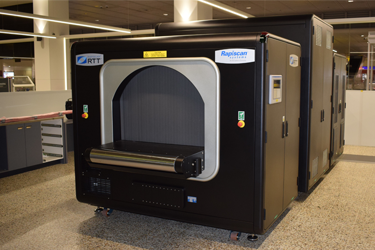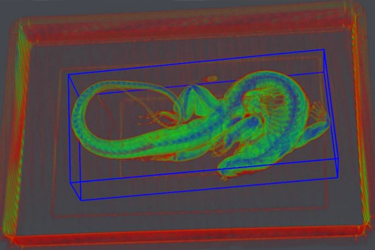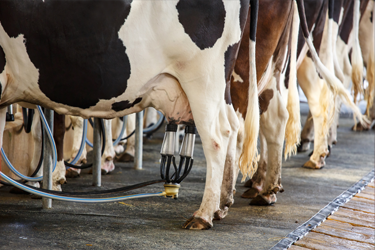| Past Projects |
3D X-ray scanning for biosecurity risk
The department has partnered with Rapiscan Australia to implement 3D X-Rays and automatic biosecurity algorithms to assist with biosecurity screening at the border. Auto-detection capability has the potential to reduce the impost on biosecurity officers and make more efficient and accurate assessments on the presence or absence of biosecurity risk materials.
We are also working with airports and the New Zealand government to trial scanning passenger luggage prior to their departure and assess risks whilst in transit. If successful, airports and air cargo operators will be able to conduct intensive screening of baggage, mail and cargo for biosecurity risks.
 |
|
3D X-Rays have a 2-3 times greater detection rate than current screening technologies. |
3D X-ray scanning and algorithms for illegal wildlife trafficking
The illegal wildlife trade is an international problem and has the potential to threaten Australia’s natural environment, $61 billion dollar agriculture industry, and human health. We are working with Rapiscan Systems and Taronga Conservation Society Australia (Taronga), to combat illegal wildlife trafficking using world first innovative X-ray technology and algorithms to automatically detect wildlife. Wildlife trafficking is detrimental to Australia’s biodiversity — taking animals from the wild poses risks to the species’ conservation, local populations, habitats and ecosystems.
 |
|
World First 3D X-Ray algorithms can automatically detect wildlife |
DNA testing in cows is reducing superbug risk
The dairy industry is an important contributor to the Australian economy. In 2017-18, it accounted for around $4.4 million of the gross value of agriculture production and around $3.3 billion of agricultural export income. We are partnering with the CSIRO to develop a cow-side, point-of-care test that identifies common, causative bacteria for mastitis. The new technology will help address antimicrobial resistance (AMR) and allows a more precise identification of mastitis in dairy cattle. Mastitis is a painful condition that reduces milk production and quality. The DNA technology addresses the important and growing issue of AMR. AMR reduces the ability to treat serious bacterial infections in animals and humans. Poor udder health costs Australian dairy farmers $150 million per year.
 |
|
Point of care DNA testing can identify common, causative bacteria for mastitis |
Virtual Reality to support EuFMD training
Australian industry and government organisations contributed close to $2 million dollars over seven years to provide the European Commission for Control of Foot-and-Mouth Disease (EuFMD) training for approximately 300 Australian veterinary and paraveterinary professionals in Nepal concluding in 2019. The department collaborated with the EuFMD and Novus Res studios and successfully piloted virtual reality (VR) FMD training experiences to show that VR and associated training modules could fill this training gap. The Oculus Quest (the VR training headset) was used, and costs less than $500 per headset. No other computer hardware is required. More than 20 departmental users trialled these training modules. All trial users recommended this technology to their colleagues to improve understanding of emergency animal disease preparedness and response processes and procedures. Further VR training in other species either using within-department expertise or partnering with universities and industry is envisaged with the technology having the potential to fill training needs cheaply and efficiently.
 |
|
Virtual Reality Foot-and-Mouth Disease training pilot |
Rapid diagnostics at the Plant Innovation Center @ Post Entry Quarantine (PIC@PEQ)
Having ready access to diagnostic capability is of critical importance to the department when dealing with emerging pests and diseases of biosecurity concern. We have successfully established a brand new, cutting-edge molecular diagnostic development laboratory within the PIC@PEQ team at the PEQ, Mickleham. We are building our in-house diagnostic capability to develop and validate new molecular technologies, which means we will be more agile in our ability to prepare and respond to emerging threats. Using an important family of plant viruses called Begomoviruses as a test-case, we are now close to finalising significantly improved diagnostic tools to detect these viruses in plant hosts. Currently high risk plants can take up to 2-3 years in quarantine once we have demonstrated and adopted High Throughput Sequencing the timeframe will reduce down to approx 6 months and the cost of quarantine for citrus will reduce from approximately $7,000 to approx $2,000.
 |
|
Rapid diagnostic tools can detect Begomoviruses in plant hosts |
Field application of eco-engineering design factors for marine biosecurity
New research is looking into using design principles to reduce marine pests. These pests threaten our unique coastal environments, industries, and social amenities. The potential damage from marine pests is severe and they threaten our biosecurity. Artificial structures such as wharves and pontoons provide substrate on which marine pest species can settle and grow. These structures can also act as ‘stepping-stones’ for marine pests to spread from vessels to new habitats. Biosecurity risk from artificial structures could be reduced through the application of ecological principles (“eco-engineering”) during design, construction and maintenance. It is cheaper and more effective to prevent pests spreading than to remove or manage the pest once it is here. Eco-engineering could provide innovative tools to avoid the economic, social and environmental costs associated with marine pest establishment and spread. The project will look at how light influences marine life colonising underwater surfaces. Designers and users of marine infrastructure will receive the research findings to encourage the uptake of eco-engineering in marine development projects.
 |
|
Eco-engineering research at how light influences marine life colonising underwater surfaces |
| We are here to Help! |
Your ideas are important, and we’d love to hear from you. Please contact our Program Management Office at biosecurity.innovation@awe.gov.au for more information.
By working together, we will be better placed to build a smarter, stronger and more sustainable national biosecurity system.
Terms and Conditions | Contact Us: dawe@brightidea.com |




